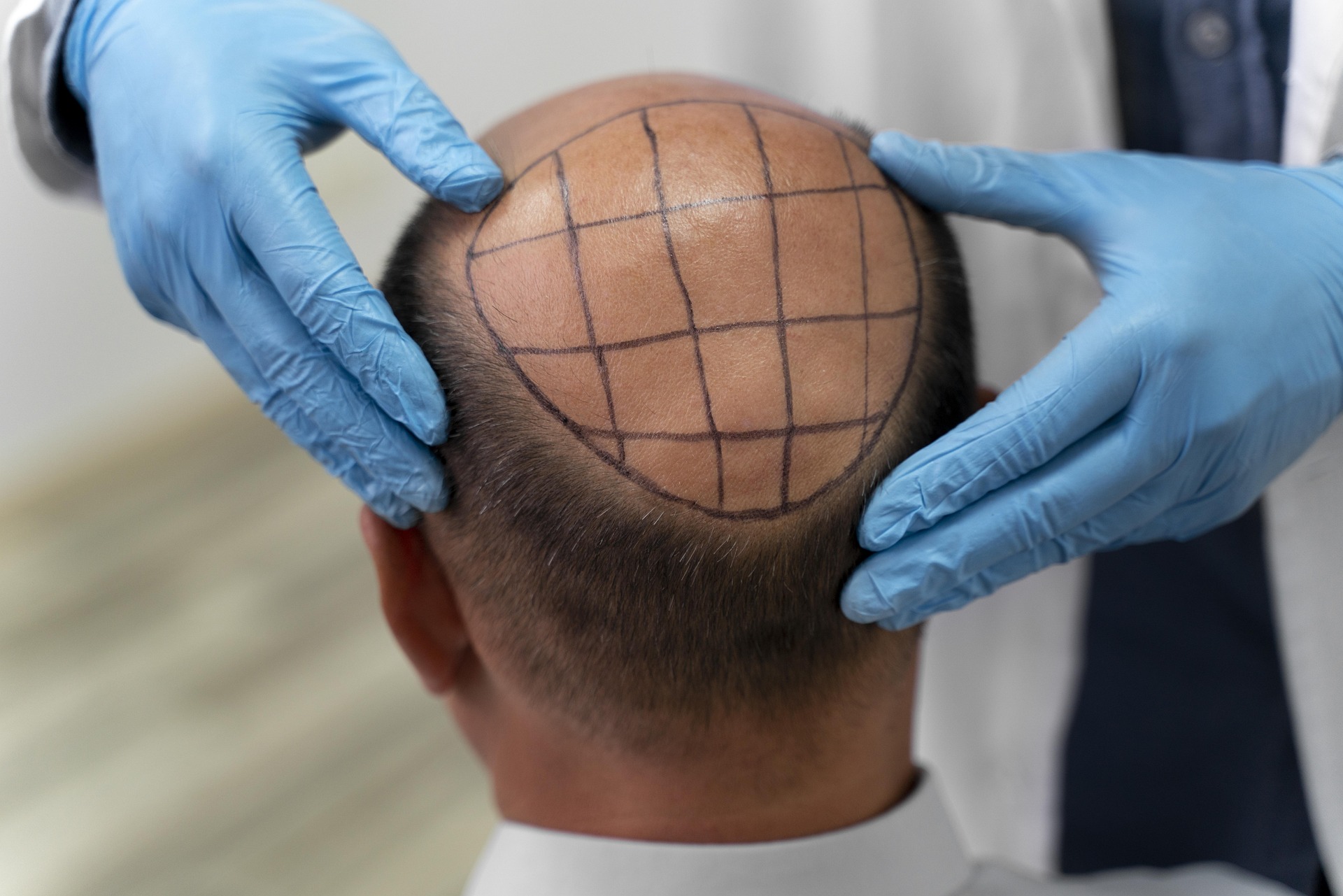31.10.2024
Hair transplantation

Hair transplantation or restoration is a treatment which transfers hair follicles from one region to another region without hair, or with thin hair.
This method is used for different forms and levels of hair loss with people of both sexes. It is usually recommended only after other methods for hair loss prevention have proven unsuccessful.
Today, with the development of modern technologies, surgeons can transfer small amounts of hair and achieve results that look completely natural.
The method most often used in hair transplantation is based on removing small parts of the skin of the scalp which contain healthy hair and transferring them to other regions. The procedure lasts a few hours, depending on the specific case, and most patients stay awake during it, usually taking medication to numb the scalp. If it’s needed to have more than one procedure, the patient must wait a few months between them, so that the scalp can heal adequately.
Hair transplantations are permanent procedures, after enough time passes and your doctor tells you it’s okay, you can treat the hair you transplanted the same as you would the rest of your hair. Still, there exists a possibility that some parts that are transplanted might not survive and fall out.
There are many causes of hair loss such as genetics, diet, exposure to stress, hormonal disbalance, the use of certain medicines and different diseases such as alopecia areata, androgenic alopecia or thyroid gland problems.
A good candidate for a hair transplant is someone who:
- Is in good general health
- Has enough healthy hair on their head which can be used in the procedure
- Has the ability to grow hair in the region where the hair is thin
Realistic expectations are also necessary, if the person has enough healthy hair which can be used, they can expect the best results.
As with any surgical procedure there are certain risks, in this case they include allergic reactions to medicine or anesthesia, blood loss, unsuccessful parts of the transplantation, infections, losing feeling in the scalp and scarring.
Many people have a very difficult time with hair loss and the possibility of returning one’s hair brings improved confidence and a permanent solution to a serious aesthetic worry.
It’s important to choose a good and experienced surgeon if you are choosing to pursue this procedure, you should carefully follow their instructions regarding the procedure and the recovery. If you haven’t, try other methods for hair recovery and hair loss prevention before this one.
In case any symptoms like a fever that won’t drop after the procedure, scalp bleeding, strong pain in the scalp or signs of infections appear after the procedure make sure to immediately contact a doctor or health professional.
*This text is intended for informational purposes only. If you experience any symptoms, it is recommended that you seek advice from your doctor or a qualified healthcare professional.*
*Image taken from: https://pixabay.com/photos/hair-hair-care-hair-transplant-8457142/*
A hair transplant can give you permanent, natural-looking results. (n.d.). https://www.aad.org/public/diseases/hair-loss/treatment/transplant
Professional, C. C. M. (2024, May 1). Hair transplant. Cleveland Clinic. https://my.clevelandclinic.org/health/treatments/21519-hair-transplant
Your trusted partner in finding medical information. We offer access to reliable resources and make it simple for you to get in touch with qualified medical service providers. Our goal is to assist you in achieving optimal health through dependable information and ongoing support, whether it's advice, a physical examination, or expert consultation.